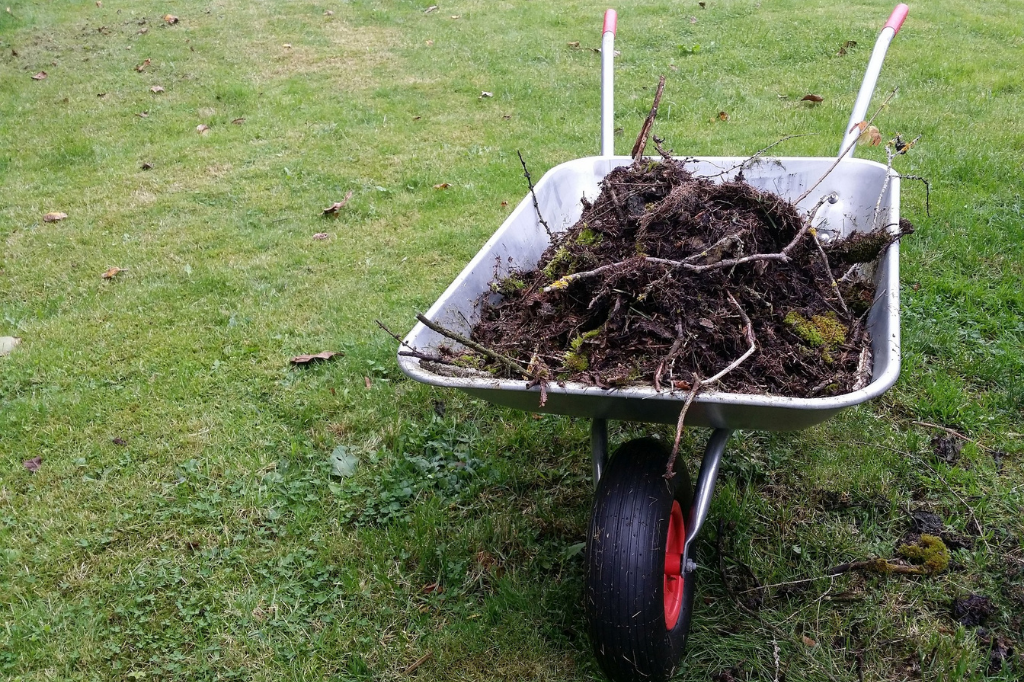Urban Homesteading is the ‘Hold-My-Beer’ Cousin of Homesteading
Homesteading in a traditional sense refers to a household farm that is practicing subsistence farming, i.e. a farm that’s producing to sustain itself. Urban homesteading takes that idea and says ‘well, I can’t do all of it – but I can do a lot of it!’
It’s all about bringing farming, self-sufficiency, and a d.i.y. attitude to city and suburban living.
Urban homesteading can include:
- Self-sufficient living – repairing over buying new, recycling, and making products at home
- Food preservation – canning, dehydrating, fermenting, and making pantry staples from scratch where you can
- Growing your own food – in a garden or a flower pot, composting, permaculture, and adding more pollinator-friendly plants to your yard
- Backyard Livestock – chickens, rabbits, bees, ducks, quail, worms, and goats are all popular options
- Reviving historical methods to reduce ecological impact – harvesting rainwater, using solar or wind power, line drying clothes, or making the shift from a car to a bike (for reasonable distances)
Why ‘Urban Homesteading’ and Not Just ‘Gardening’?

It’s all about the intent.
Last year we had a garden; I grew tomatoes and cucumbers (and too many spicy peppers) and then the growing season ended and everything died and that was the end of it.
This year we’re urban homesteading and I’m hoping to grow enough food to make an impact on our grocery bill and to preserve the excess through canning, pickling, and freezing for use throughout the winter.
While they both start out the same – I have a garden in my yard that has veggies in it – the end goal when it comes to urban homesteading is much more extensive.
But… Why Though?

People chose to homestead for any number of reasons. A dream of returning to a simpler time or a desire to be less dependent on modern infrastructure are two of the big ones, living more sustainably would probably be up there on a top ten list as well.
For us, it’s the level of wealth inequality here in the US that’s gotten us to start now.
We’re being priced out of being able to afford groceries so we’re looking back to traditional skills to try to make up some of that difference.
I can’t make my mortgage or utilities cheaper but I know I can grow a tomato! As it turns out it’s actually a fairly common solution in the United States.
From Victory Gardens to Community Gardening

Gardening for self-sustainability in times of crisis has a long history in the US but to keep it relatively recent I’m just going to give a quick run-down from the 1900s.
In 1917 with World War I food production and transportation were under stress and the US National War Garden Commission was established to encourage people to grow their own food, and to raise bees and chickens, in their yards.
As the food crisis of the first World War ended, the Great Depression began with folks keeping their gardens to help feed their families.
In 1939 World War II started and the production and transportation of food were once again under threat bringing a resurgence of the victory garden. By 1944 roughly 40% of food in the US was grown in victory gardens!
Victory gardens were grown on private lawns, at schools, and in community lots where they were sometimes referred to as community gardens.
In the 1960s and 1970s, the idea of community gardens saw a surge in popularity due to the efforts of grassroots organizations. Community gardens were seen as a way to revitalize urban neighborhoods and address ecological concerns.
Then in the 2000s, there was another resurgence in community gardens in response to the economic crisis.
In 2009 Michelle Obama brought gardening back to the white house for the first time since World War II.
By 2013 roughly one-third of American families reported growing some food in their yard.
…To today

Now with the Covid-19 pandemic, and everything after it, there’s a new generation of people who are interested in growing food at home.
Some folks got the gardening bug after being isolated at home during quarantine efforts and others are looking to become more self-sustaining after facing the realities of how fragile an internationally based food network can be.
Whatever reason drew you to urban homesteading (you’re still reading so you must be a little bit curious) you’re welcome to stick around and join us as we start our urban homesteading adventures.
We don’t know what we’re doing, yet, but we’re willing to look silly and make mistakes as we figure it out!
What do you think?
Did I miss anything about what urban homesteading is? Have you heard of Victory Gardens before?
Comment below and let me know!
If you want to join us on our homesteading adventure head on over to the Starting our Urban Homestead!
Or for information on how to start your own urban homestead check out my post How to Start an Urban Homestead








